The New Normal: How Has the Quarantine Changed the Way You Work?
October 01, 2020
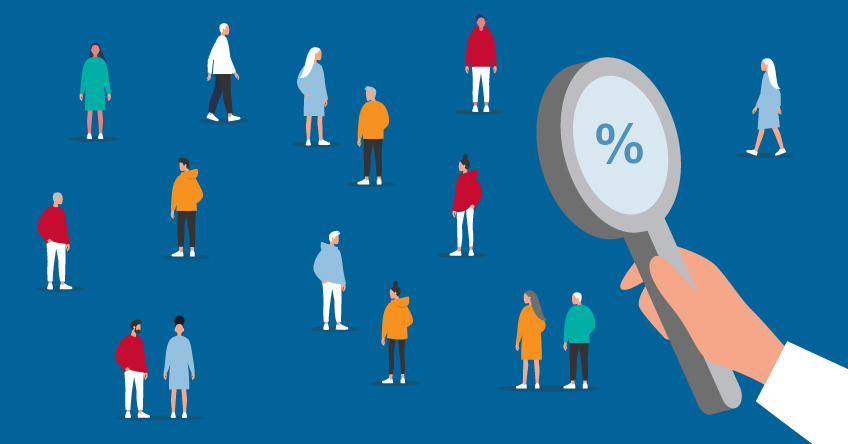
During the quarantine, we conducted a global survey among 1600 users of ABBYY FineScanner, ABBYY Business Card Reader, and ABBYY TextGrabber. We wanted to better understand the impact of the quarantine on the way people work.
We learned that 82.1% of respondents switched to a remote work setting during the COVID pandemic.
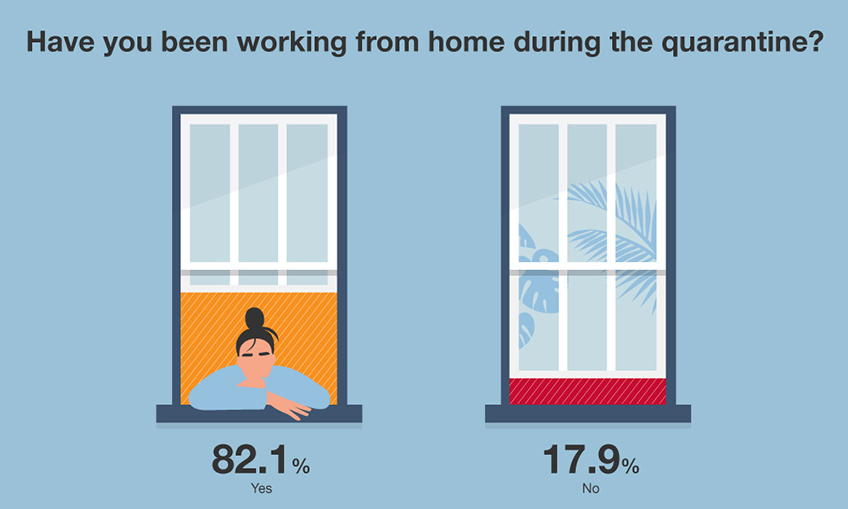
Have you been more productive?
Our survey found that 43% of respondents noted they were more productive working from home than in an office, while 32.6% stated that they hadn’t noticed a difference in their level of productivity, and 21.8% claimed that they were less productive. Some respondents shared that they had mixed feeling about working from home.
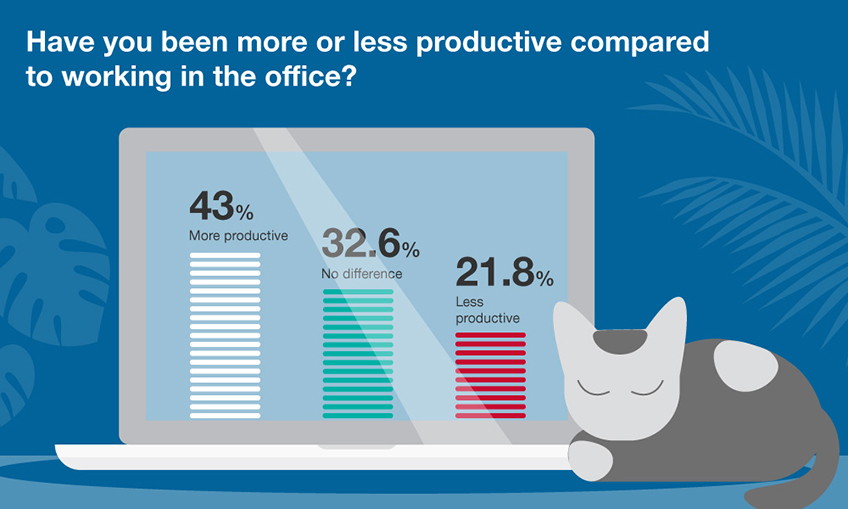
“Mixed - more productive some days, less productive other days”
“I tried to be as productive as in my work office. The difference was in the time. I had more often pause, then I had worked later, out of worktime.”
“Depends, some things went better, others worse..”
“Some of each”
Have you been more motivated?
As for the motivation while working from home, 36.2% of our users haven’t noticed any changes in their motivation level. Nearly the same, 35.4% felt more motivated while working remotely. And 27% of respondents stated that their motivation level dropped.
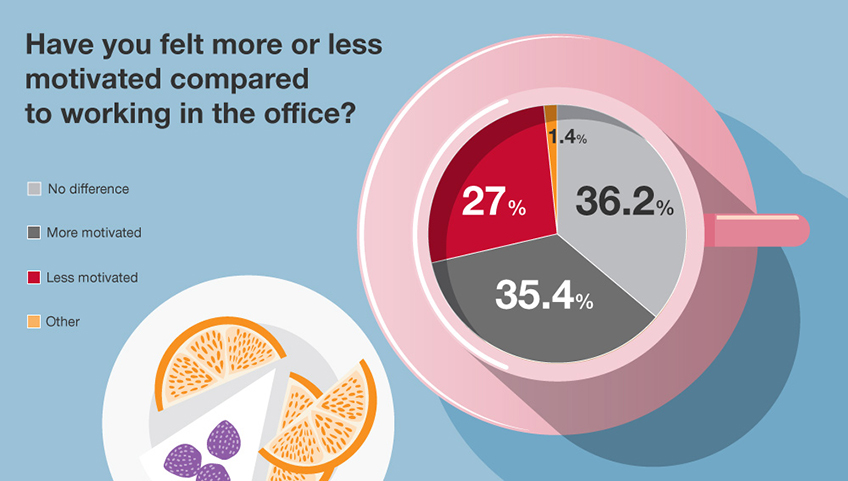
How long did your typical work day last?
A typical work day during the quarantine mostly lasted 8 – 10 hours (33.8%). Of our respondents, 25.7% worked 6 – 8 hours a day, and 19.6% worked 4 – 6 hours.
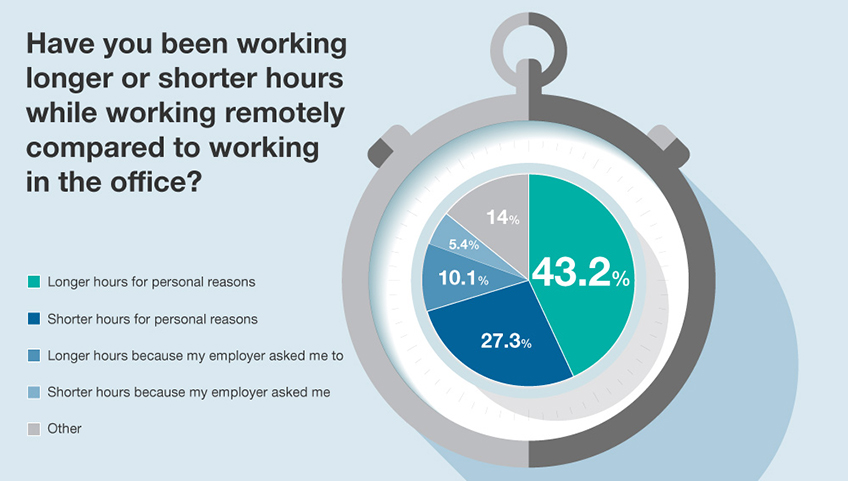
Compared to pre-COVID, 43.2% of respondents worked longer hours for personal reasons while staying home, and 27.3% worked shorter hours for personal reasons. Here’s what some respondents shared:
“Longer hours because of dissolution of work boundaries.”
“Working at home while providing full time care has resulted in extremely long work days to complete my workload.”
“I will not say I work more or less compared to when things were normal. However, I have noticed that there are lot of time-wasting activities from other colleagues or superiors which rarely comes up when working from home.”
“Longer hours due to feeling I must perform better under the circumstance of working from home rather than an office building.”
What is your preferred workplace arrangement when you will be able to return to the office?
Respondents (53%) said that going forward, they would prefer an arrangement that enables flexibility between working from home and working in the office. Many indicated they prefer either splitting their time 50/50 or working mostly from home with some days in the office.
Any advantages?
Participants of the survey pointed out many advantages of remote work. The most popular were:
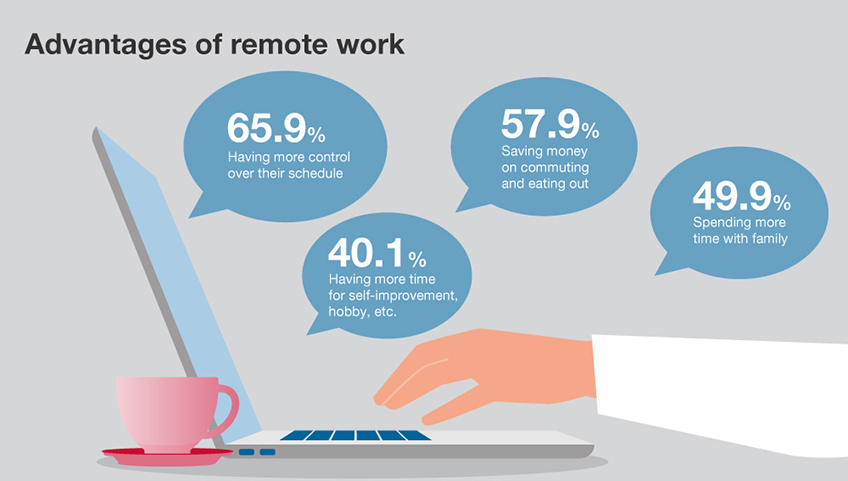
Also, some of our users shared their advantages:
“Being in the comfort of my home allows me to take a quick break and pet my cats or step outside for fresh air. Having windows open with sounds of nature. No fluorescent lights, no phones ringing, my music as loud as I want. Being able to prep dinner before 5. Taking a nice walk during my lunch hour. These are a few of my favorite things!”
“Less ineffective communication.”
“More productive not wasting money on petrol and travel time and parking the car once I get to work”
“Better food at home. Possibility to have conf calls while doing simple things around the house like watering plants or enjoying the comforts of my home.”
…Or disadvantages?
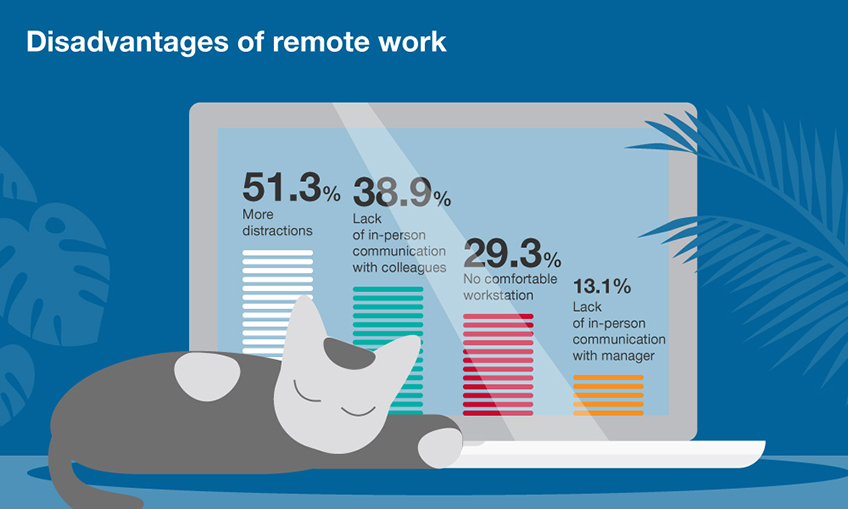 What about the disadvantages of remote work? In the survey, 51.4% of respondents stated that there are more distractions at home. The lack of in-person communication with colleagues was a disadvantage for 38.9% of our users, and 29.3% didn’t have a comfortable workstation at home. Here are some less positive thoughts about remote work from our survey participants:
What about the disadvantages of remote work? In the survey, 51.4% of respondents stated that there are more distractions at home. The lack of in-person communication with colleagues was a disadvantage for 38.9% of our users, and 29.3% didn’t have a comfortable workstation at home. Here are some less positive thoughts about remote work from our survey participants:
“Getting info, feedback, approval can be frustrating sometimes...video meets have been very helpful.”
“The lack of in-person communication, in general, makes it less fun to work from home.”
“I spend longer periods sitting and not moving around every so often.”
“Workstation not as powerful as in the Office.”
Work-life balance
The majority of respondents (56%) also noted that working from home has impacted their work-life balance positively. Only 16.3% stated that their work-life balance had been negatively impacted by the lockdown.
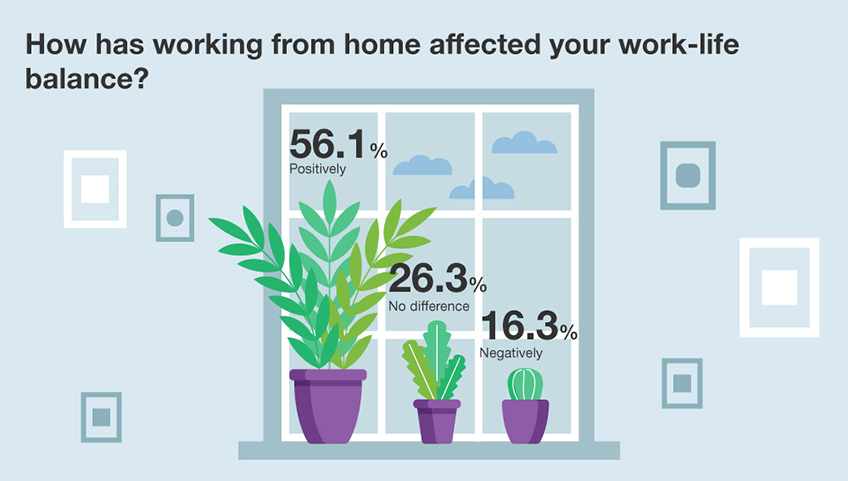
While 40.6% of respondents preferred dispersing work and relaxation throughout the day, 24.8% experienced trouble switching from work to relaxation.
Was it more stressful?
The research showed that working remotely helped 43.8% of respondents to cut down on their stress level, and while 34.5% didn’t notice any changes in their stress level, unfortunately, 20.5% of our users felt more stressed while working from home.
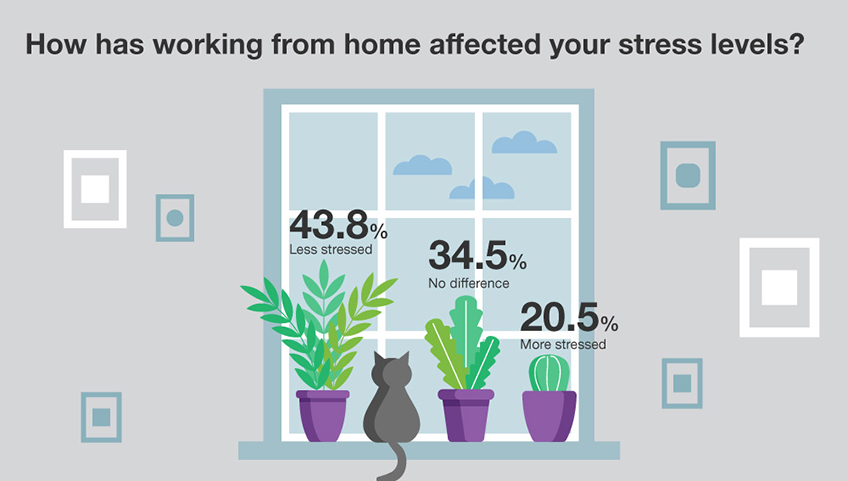
What about your screen time and gadgets usage?
The lockdown made people use their gadgets more, with 65.1% of respondents mentioning that their screen time has increased.
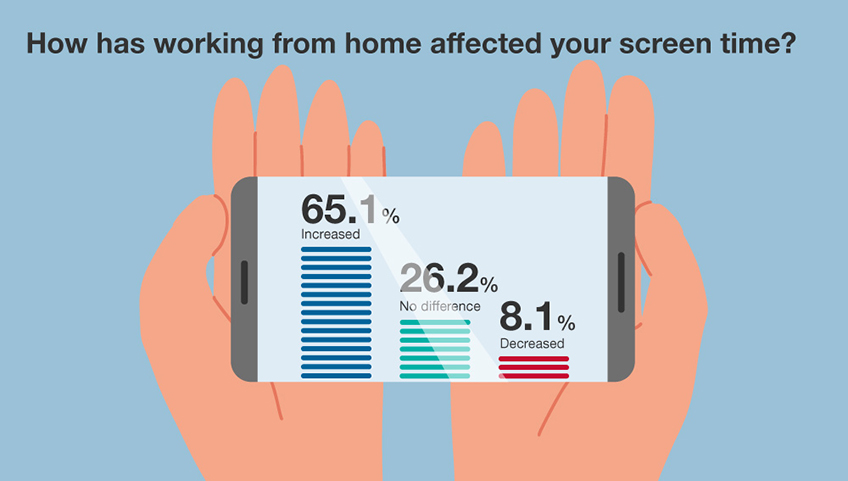
We also asked our users what are their favorite off-screen ways of relaxation. The most important was, to our surprise, watching TV shows and movies, mentioned by 50.6% of respondents. Here are other activities:
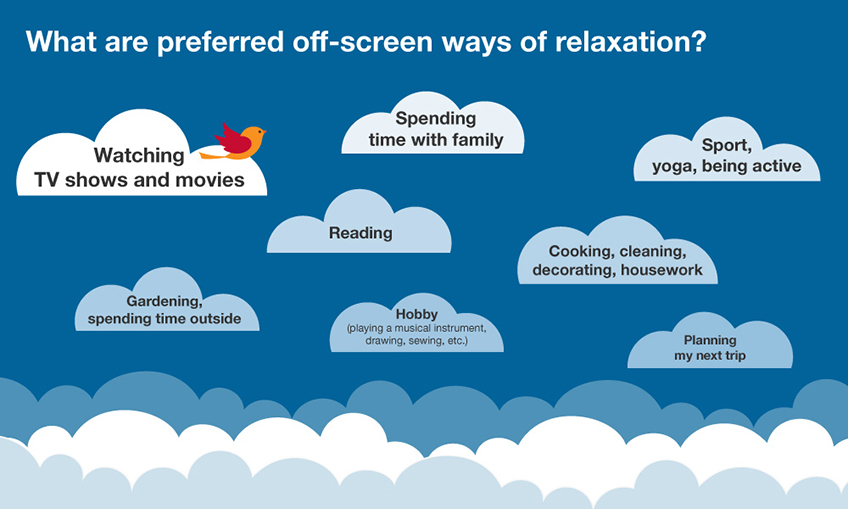
Digital Detox, which is a popular term today, is practiced by 21.9%, and 28.8% try to rest from their gadgets, but sometimes fail.
We also wanted to learn if our users follow any blogs or podcasts on meditation, yoga, mindfulness practice, etc. Only 22.2% of survey participants do. Here are some of the named blogs and podcasts; maybe you’ll find something useful for yourself:
- Kody Bateman, The world and everything in it
- Lee Harris Impact your world
- Calm
- BrainHQ
… and many others.
Who are you?
The majority of respondents (51.5%) are 40 – 59 years old. They are specialists, managers, and directors mostly in IT, engineering, sales, and education.
Thank you everyone that participated in our survey!
